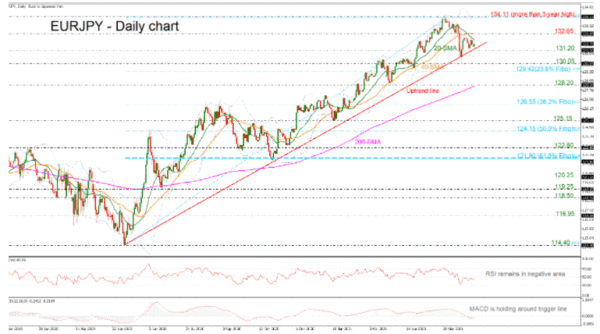EURJPY has found significant support near the ascending trend line over the last sessions, failing to confirm the negative structure. However, the pair is still developing underneath the bearish cross within the 20- and 40-day simple moving averages (SMAs) and the 132.65 resistance. The RSI indicator is heading marginally up below the 50 level, while the MACD is sliding beneath its trigger and zero lines.
If the price stays above the rising line and breaks through the 132.65 support level, immediate resistance could come from the upper Bollinger band around 133.67, just ahead of the more than three-year high of 134.11. With a push higher, the bulls might reclaim the lead and test the 137.50 level, registered in January 2018.
A drop below the uptrend line and 131.20, might push the market towards the 130.05 support level before falling to 129.42, the 23.6% Fibonacci retracement level of the up leg from 114.40 to 134.11. The 200-day SMA, which coincides with the 128.20 support, may act as a halt to the bearish trend below that level.
Overall, EURJPY has been rising since May 2020, and only a drop below the diagonal line and the 200-day SMA could change the picture to neutral.















